
How to gradually increase time on task
Mastering Focus: Strategic Approaches to Extend Your Attention Span
Understanding and Enhancing Your Capacity to Focus
Developing the ability to focus for longer periods is crucial for productivity, learning, and personal development. This comprehensive guide explores evidence-based strategies, practical techniques, and tailored approaches designed to help you expand your focus gradually, ultimately achieving sustained attention and increased task efficiency.
Implementing Proven Time Management Techniques
What are effective strategies for gradually increasing the amount of time spent on tasks?
One effective way to help individuals, especially children, gradually extend their focus time is by using structured techniques like the Pomodoro Technique. This method involves working for short, manageable intervals—usually 25 minutes—followed by brief breaks. Over time, these intervals can be increased as concentration improves. For example, starting with 2 to 4-minute engagement periods, then slowly extending them helps build stamina without overwhelming.
Another method is the Time Blocking approach, where specific blocks of time are scheduled for particular tasks throughout the day. This creates a predictable routine and prevents multitasking, which can diminish focus. Combining this with the Eat That Frog Technique, which advocates tackling the most challenging or important task first, ensures that major priorities are addressed when energy levels are highest.
Timeboxing, originating from software development, is similar but emphasizes setting a fixed time limit for working on a single task. This technique promotes focused effort within a specified period, reducing decision fatigue and encouraging steady progress. It can also boost motivation and progress tracking.
Furthermore, establishing structured routines or habits provides consistency, making focus easier over time. Breaking down larger tasks into smaller steps reduces feelings of being overwhelmed and sustains motivation. Using visual tools like checklists and timers helps children and adults alike to monitor progress and maintain concentration.
Supporting attention span improvement also involves lifestyle choices—adequate sleep, physical activity, and good nutrition play vital roles. Incorporating quiet moments, mindfulness, and breathing exercises can rewire concentration pathways.
Here’s a comparison of popular techniques and their core features:
| Technique | Focus Duration | Break Duration | Best For | Additional Benefit |
|---|---|---|---|---|
| Pomodoro Technique | 25 minutes | 5 minutes | Starting focus training, managing mental fatigue | Builds stamina gradually, enhances time awareness |
| Time Blocking | Variable | N/A | Planning daily tasks, ensuring dedicated focus periods | Encourages routine and structure |
| Eat That Frog | N/A | N/A | Prioritizing important tasks early in the day | Ensures key tasks get completed early |
| Timeboxing | Fixed time | N/A | Managing specific tasks with a deadline | Prevents procrastination, increases accountability |
| Structured routines | N/A | N/A | Consistent daily habits for sustained attention | Reduces cognitive load, increases predictability |
Using these strategies in combination, tailored to individual needs and learning styles, can significantly increase focused work time. For younger children or those with attention difficulties, beginning with very short periods and gradually increasing, while maintaining engaging activities and minimizing distractions, yields the best results.
Gradual Increase of Attention Span in Children and Learners
How can I improve my focus and attention span for longer periods of task engagement?
Enhancing focus and extending attention spans involves adopting structured strategies tailored to individual needs, especially for children and learners with attention challenges. Start by assessing their current baseline—observe and time how long they can remain engaged with a specific task. This provides a clear starting point and helps in setting realistic, incremental goals.
Customizing approaches based on learning styles is crucial. For visual learners, incorporate charts, visual timers, and colorful checklists. Auditory learners benefit from verbal instructions and auditory cues, while hands-on learners thrive with tactile activities and movement opportunities. Multisensory approaches—combining sight, sound, and touch—often yield the best results.
Using visual timers can significantly aid children in understanding time constraints, reducing anxiety around tasks. These timers provide a clear visual cue of how much time remains, helping children stay on track.
Incorporating movement and scheduled breaks also helps maintain attention. Using wiggle cushions, exercise balls, or short physical activities during study sessions can reset focus. Breaks should be planned and short; during these times, children can stretch, walk, or do quick exercises to rejuvenate their attention.
Creating an organized, calm workspace minimizes distractions. An environment with minimal clutter, well-placed visual cues, and a dedicated study area helps children focus better. Breaking larger tasks into smaller steps makes tasks less overwhelming and easier to manage.
Reward systems serve as motivation. Rewards, whether through praise, stickers, or small privileges, reinforce focused behavior and task completion.
Practical strategies such as the Pomodoro Technique—25-minute work intervals followed by short breaks—can gradually extend time on task. Combining this with the 1–3–9 planning method—prioritizing one crucial task, three important tasks, and nine routine tasks daily—can optimize productivity.
Research indicates that employing these techniques with consistent application can lead to measurable improvements in attention span. Most importantly, patience and gradual progression are essential. As children and learners develop skills and confidence, their capacity to focus for longer periods naturally increases.
By creating supportive environments, customizing approaches, and reinforcing positive behaviors, caregivers and educators can help children with attention difficulties improve their focus and achieve sustained engagement in their learning activities.
Building Focus in Children and Individuals with Attention Challenges
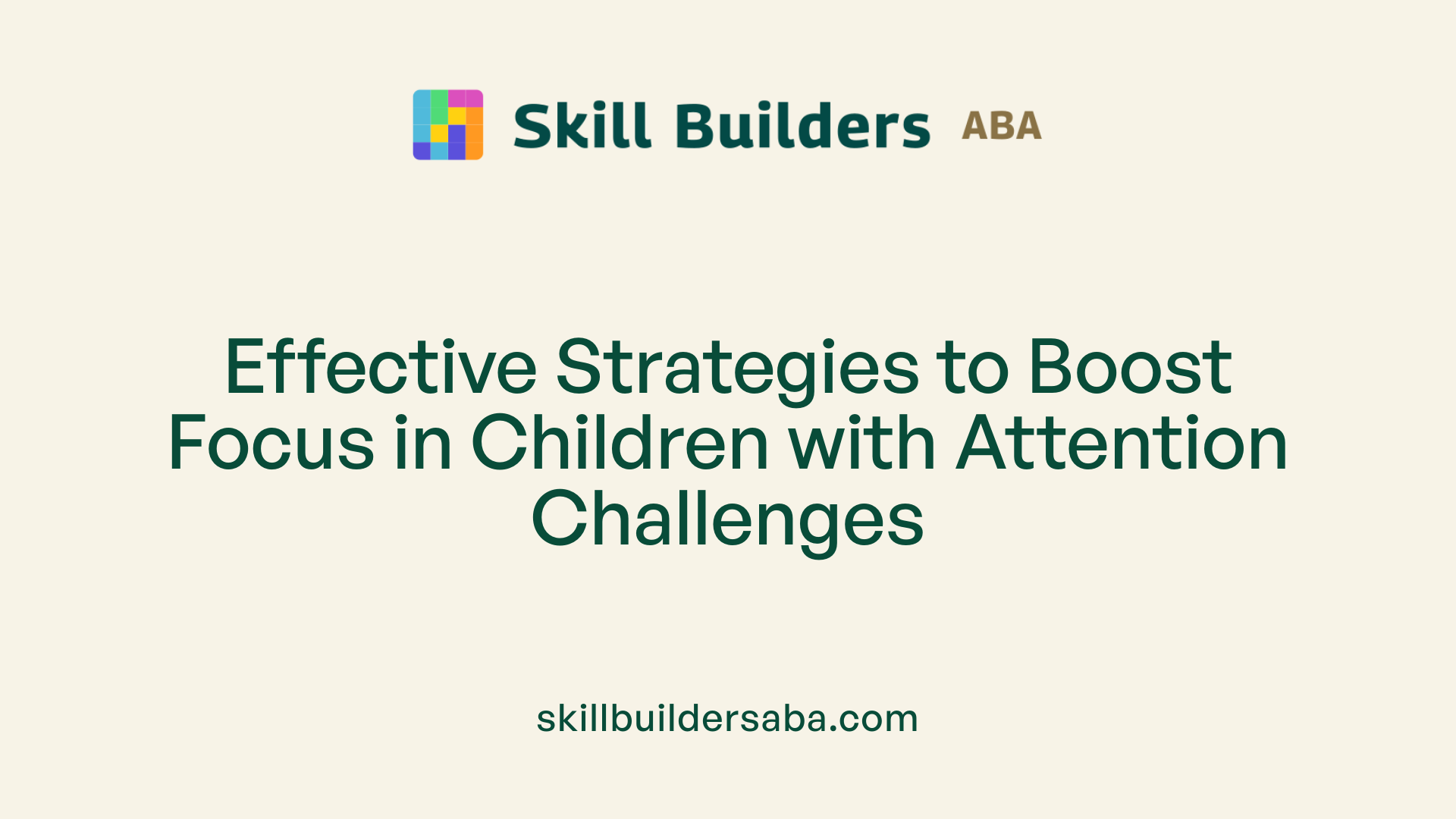
What approaches are effective for children or individuals with attention challenges to increase their focus?
Improving concentration for children and people facing attention difficulties often requires a mix of tailored strategies. Establishing structured routines is fundamental; predictable daily patterns reduce anxiety and help individuals know what to expect, making it easier to stay engaged.
Using visual aids is another powerful technique. Visual schedules, charts, and timers help clarify expectations and support self-monitoring, especially for visual learners. Breaking larger tasks into small, manageable steps prevents feeling overwhelmed, encouraging steady progress.
Incorporating movement and active breaks is vital. Allowing children to use wiggle cushions, exercise balls, or simply walk around during tasks helps burn excess energy and resets focus. Scheduled breaks during work sessions, such as every 15-20 minutes, sustain mental energy and prevent fatigue.
Changing instructional methods throughout the day can also maintain interest. Alternating activities and teaching techniques every 15-20 minutes keeps the environment dynamic and engaging.
Teaching skills for attention management, like planning, self-monitoring, and goal setting, empowers children to take control of their focus. For example, visual timers can help them gauge how long they need to concentrate, and self-recording devices can reinforce awareness of attention levels.
Positive reinforcement plays a crucial role. Rewarding focused behavior with praise or incentives encourages continued effort. Similarly, behavior modification strategies can reinforce desired attentional behaviors.
Environmental modifications—such as reducing noise, clutter, and visual distractions—create a calmer workspace conducive to focus. Using interest-based engagement, where activities connect with the child's passions, also boosts motivation.
In some cases, medication and occupational therapy are recommended components of comprehensive treatment plans, especially for individuals with ADHD. Overall, a combination of these approaches, personalized to each individual’s needs, can significantly enhance their ability to concentrate and learn effectively.
Self-Monitoring and Prompts to Sustain Focus
What practical tips exist for self-monitoring and prompting oneself to stay focused for longer periods?
Maintaining focus over extended periods can be challenging, but several practical strategies can help. One of the most effective methods is using timers to structure work intervals, such as the Pomodoro Technique. This approach involves working for a set period, often 25 minutes, followed by a short break, helping to build endurance gradually.
Keeping a focus journal or thought pad is another useful practice. When you notice your attention drifting, jot down what distracted you or what thoughts pulled you away. Reviewing these notes later can reveal patterns and triggers, enhancing your self-awareness.
Self-reminders or scripts are simple cues you develop to prompt redirection when signs of distraction emerge. For example, silently repeating a phrase like “Back to work” can reinforce focus.
Incorporating mindfulness exercises and physical activity boosts overall attention. Short mindfulness sessions, such as deep breathing or stretching, can recalibrate your focus, while regular movement breaks prevent fatigue.
Creating a dedicated, distraction-free workspace also supports sustained attention. Clearing clutter, turning off notifications, and setting boundaries with others reduce interruptions.
Prioritizing tasks by focusing on one item at a time minimizes overwhelm. Using visual cues—like checklists, sticky notes, or natural elements—can also provide constant visual prompts for staying on track.
Integrating these strategies into your routine can significantly improve your ability to focus for longer durations, making productivity more attainable.
Research-Backed Methods for Enhancing Attention Over Time
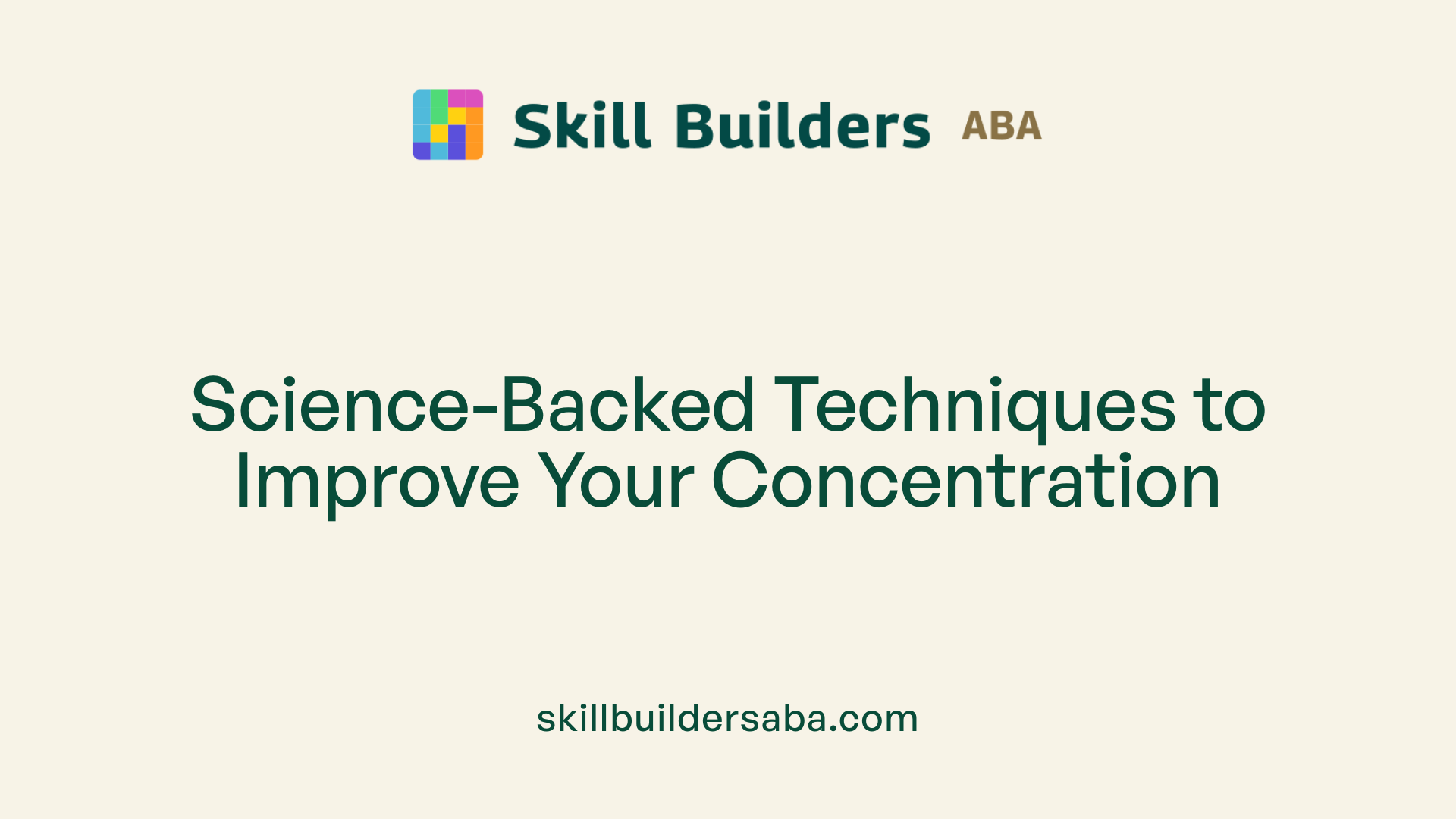 Improving sustained attention requires implementing strategies supported by scientific research. Several approaches have proven effective in helping individuals maintain focus over longer periods.
Improving sustained attention requires implementing strategies supported by scientific research. Several approaches have proven effective in helping individuals maintain focus over longer periods.
Mindfulness meditation is one such technique, where practicing present-moment awareness can strengthen attention capacities and induce beneficial brain changes. Regular mindfulness exercises can reduce mind-wandering, improve concentration, and enhance emotional regulation.
Physical activity, especially aerobic exercise like walking, running, or cycling, has consistent positive impacts on brain health. Engaging in regular movement not only boosts mood but also increases blood flow to the brain, supporting better attention and cognitive flexibility.
Good sleep hygiene is crucial for sustained attention. Adequate, quality sleep restores brain function and supports memory, focus, and decision-making. Establishing regular sleep routines, reducing screen time before bed, and creating a calming sleep environment contribute significantly to maintaining attentional capacity.
Cognitive training exercises, including puzzles, brainteasers, and multitasking challenges, can help enhance focus and self-regulation. While some studies indicate mixed results, these activities stimulate neural pathways involved in attention control.
In addition to these methods, behavioral strategies like self-monitoring, goal-setting, and direct skill instruction can support attention development. Incorporating movement during tasks, exposure to natural environments, and mindfulness-based stress reduction programs can further reinforce focus.
Despite promising findings, current evidence suggests limited generalization of these interventions to broader learning or cognitive domains. Long-term, rigorous research is necessary to firmly establish their effectiveness and optimal application.
| Method | Effectiveness | Additional Benefits |
|---|---|---|
| Mindfulness Meditation | Improves attention and brain restructuring | Reduces stress and emotional reactivity |
| Physical Activity | Enhances cognitive flexibility and mood | Improves overall brain health |
| Sleep Hygiene | Restores cognitive function, supports focus | Prevents fatigue and mood disturbances |
| Cognitive Exercises | May enhance self-regulation; evidence mixed | Stimulates neural pathways involved in attention |
| Environmental and Behavioral Strategies | Support sustained focus and self-monitoring | Reduce distractions, promote planning |
Choosing a combination of these science-backed methods can help individuals extend their ability to focus over time, ultimately improving productivity and well-being.
Strategies Tailored for Children and Learners with Special Needs
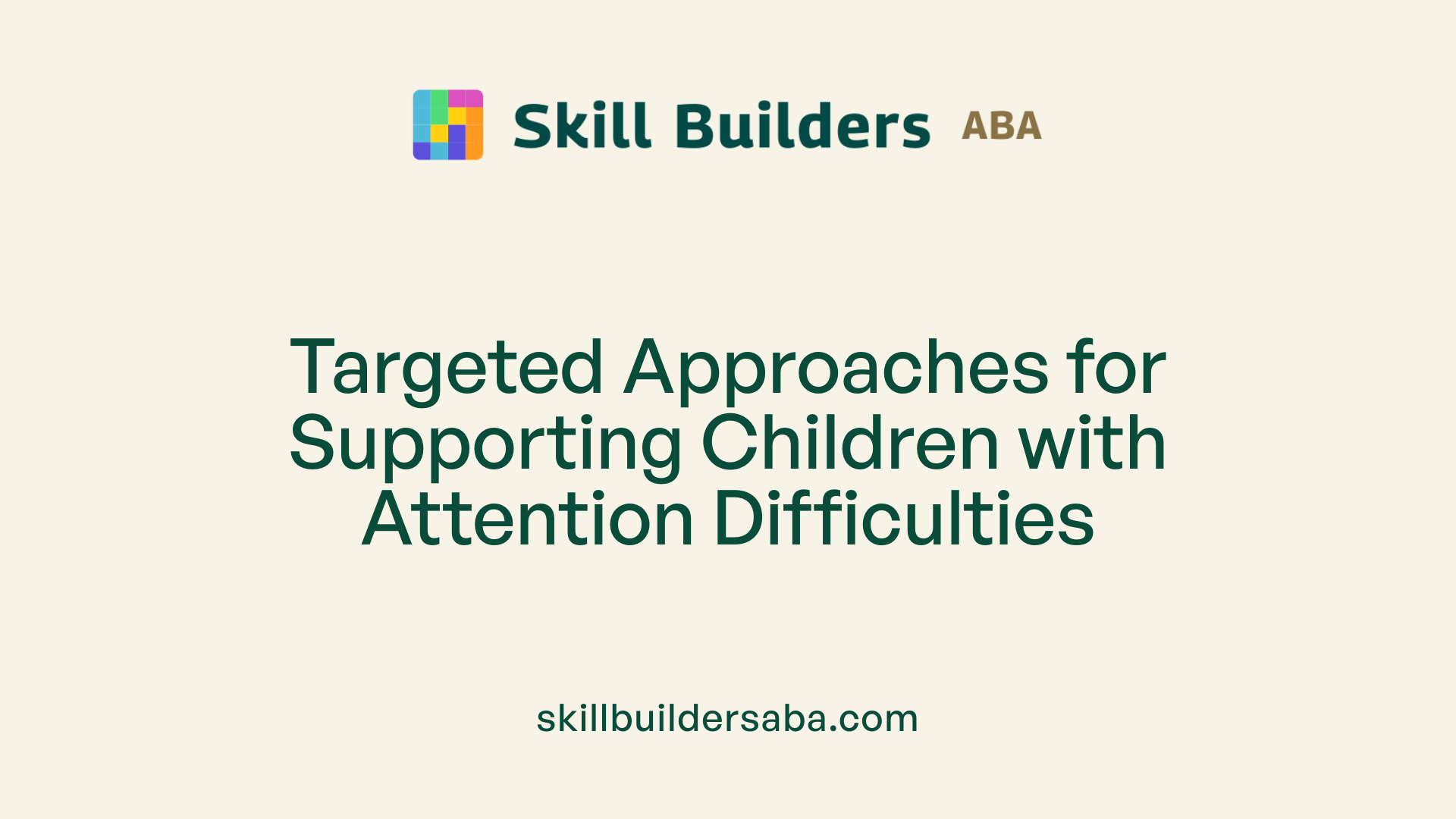
What approaches are effective for children or individuals with attention challenges to increase their focus?
For children and individuals facing attention difficulties, a variety of tailored strategies can significantly improve their focus and engagement. Establishing consistent routines helps create a predictable environment that reduces anxiety and cognitive load. By set specific times for activities and breaks, children learn when to expect transitions, aiding concentration.
Visual cues are another powerful tool. Using charts, color-coded schedules, or visual timers helps children understand task expectations and manage time effectively. These cues support visual learners and those with attention deficits by providing constant, tangible reminders of what needs to be done.
Incorporating movement breaks during tasks can boost mental energy and reduce restlessness. Activities such as using wiggle cushions, exercise balls, or short physical exercises help children reset and return their focus more effectively.
Engaging children through interest-based activities and varying instructional methods every 15-20 minutes helps maintain motivation. Short, dynamic sessions prevent fatigue and boredom, which are common obstacles to sustained attention.
Teaching self-regulation skills like planning, self-monitoring, and goal-setting enables learners to take greater control over their focus. Techniques such as using checklists or self-recording devices, exemplified by students with ADHD using tactile prompts, show evidence of improving on-task behavior.
Environmental modifications also play a critical role. Creating a calm, organized workspace that minimizes noise, clutter, and distractions supports better concentration. Specific changes include quiet areas for focused work and the strategic placement of educational materials.
Finally, leveraging individual interests and preferences can make activities more appealing, further supporting focus. In some cases, complementary approaches like medication or occupational therapy can be part of a comprehensive plan, addressing underlying challenges related to attention difficulties.
| Strategy | Description | Additional Benefits |
|---|---|---|
| Routine Establishment | Consistent daily schedule | Reduces anxiety, improves predictability |
| Visual Aids | Timers, charts, color codes | Clarifies expectations, supports visual learners |
| Movement Breaks | Short physical activities | Boosts mental energy, reduces restlessness |
| Interest-based Activities | Incorporates personal interests | Increases motivation and engagement |
| Environmental Adjustments | Organized, distraction-free workspace | Enhances focus and minimizes interruptions |
| Self-monitoring | Checklists, tactile devices | Encourages independence and self-regulation |
By combining these strategies, caregivers and educators can create a supportive learning environment that accommodates attention challenges, ultimately fostering improved focus and productivity.
Practical Implementation of Focus-Extending Techniques
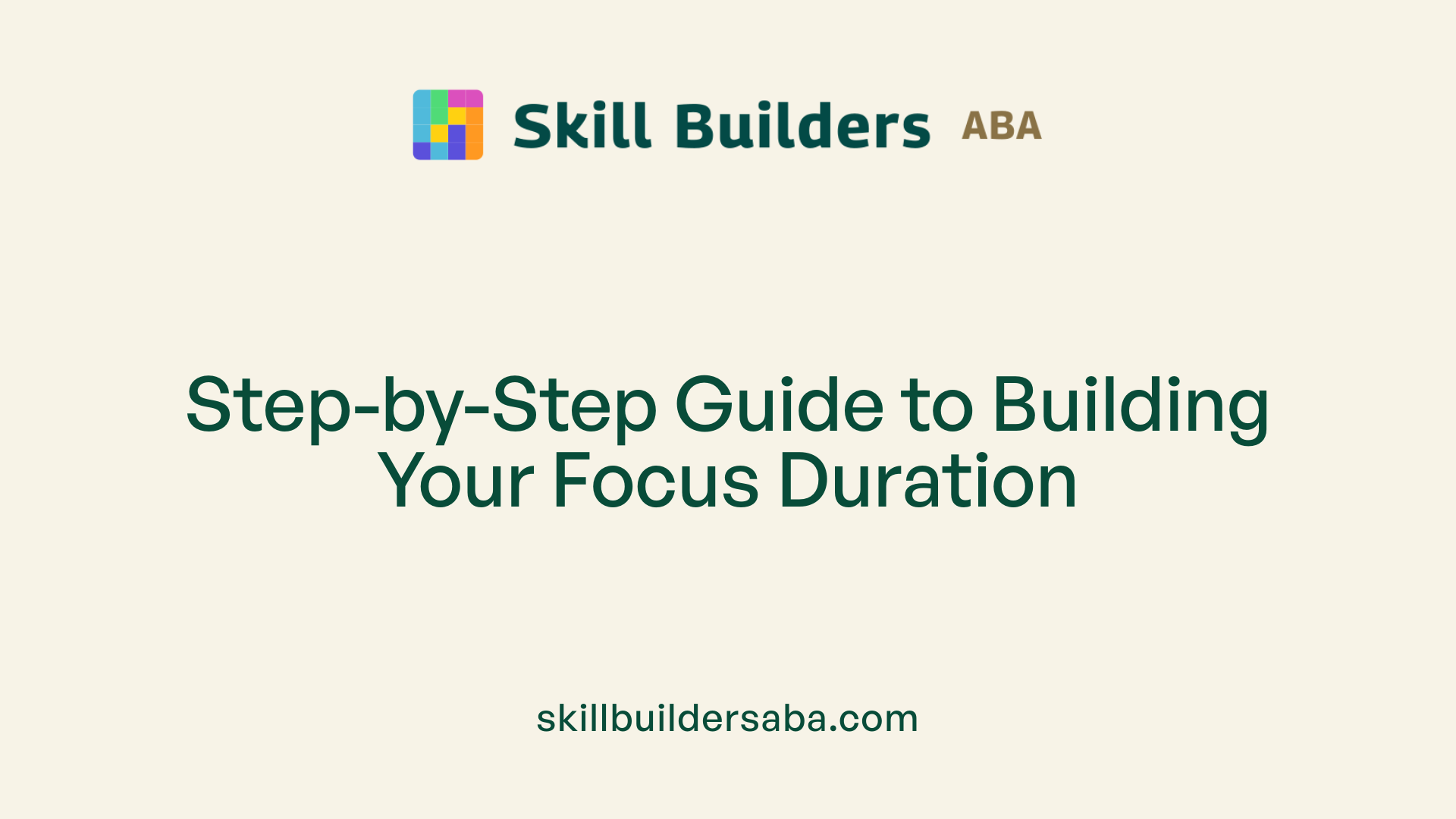 To effectively improve your ability to focus over time, it is helpful to follow a step-by-step approach that gradually extends your concentration periods. Begin by assessing your current attention span, perhaps by trying to stay focused on a task and timing how long you can comfortably maintain concentration. Start with small, manageable goals, such as aiming for 5 to 10 minutes of focused work.
To effectively improve your ability to focus over time, it is helpful to follow a step-by-step approach that gradually extends your concentration periods. Begin by assessing your current attention span, perhaps by trying to stay focused on a task and timing how long you can comfortably maintain concentration. Start with small, manageable goals, such as aiming for 5 to 10 minutes of focused work.
Using structured techniques like the Pomodoro Method can support this process. This method involves working in intervals—commonly 25 minutes of work followed by a short break—helping to build stamina while preventing burnout. During these sessions, eliminate distractions by turning off notifications, focusing on full-screen work, or creating a quiet environment.
Prioritizing your most important tasks first aids concentration efforts. Employ strategies like Warren Buffett's '2 List' method, which involves listing your top priorities and focusing only on those. This reduces decision fatigue and helps maintain focus.
In addition, incorporate warm-up routines such as stretching or mindfulness exercises before beginning work. Schedule tasks during times when your energy is naturally higher, often in the morning.
Regularly review your progress by tracking your focused work sessions and noticing improvements. Use timers or visual cues like alarms to stay aware of your session limits. As you become more comfortable, gradually extend your focus intervals, aiming to increase them over weeks. This incremental approach helps to build mental resilience and concentration capacity.
Adjust your strategies based on what works best for you. For example, if you find your attention wanes quickly, introduce more frequent breaks or change your environment. With persistence and planning, these steps can lead to sustained improvements in focus and productivity.
Role of Environment and Lifestyle in Focusing Better
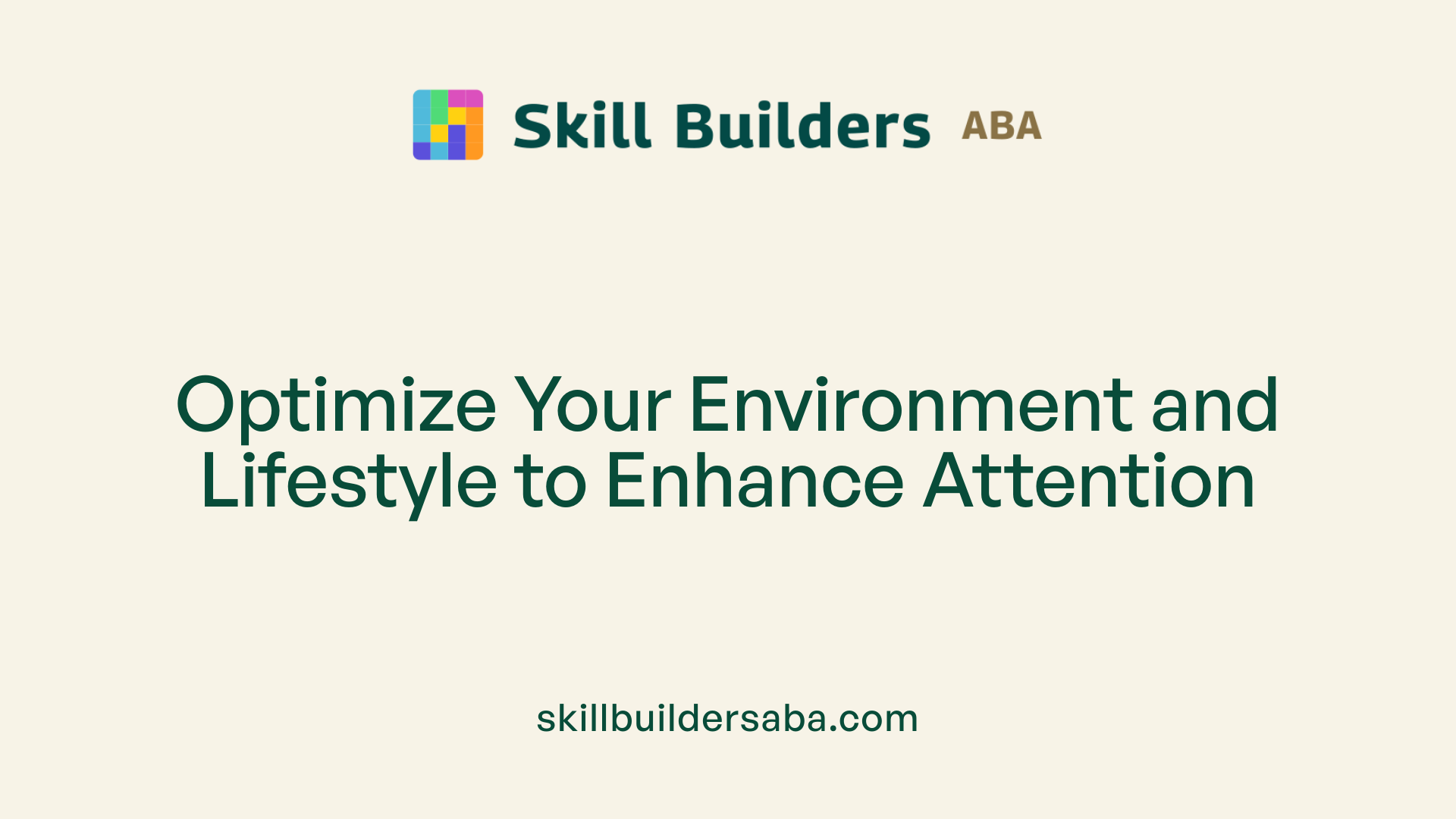 Creating an environment conducive to focus is crucial for improving attention and productivity. A well-organized, calming workspace with minimal distractions helps individuals, including children, stay engaged with their tasks more effectively. For children, incorporating movement opportunities—such as wiggle cushions or exercise balls—can also enhance their ability to concentrate.
Creating an environment conducive to focus is crucial for improving attention and productivity. A well-organized, calming workspace with minimal distractions helps individuals, including children, stay engaged with their tasks more effectively. For children, incorporating movement opportunities—such as wiggle cushions or exercise balls—can also enhance their ability to concentrate.
Healthy sleep patterns and nutrition play vital roles in maintaining attention. Adequate sleep allows the brain to recover and function optimally, while proper nutrition fuels cognitive processes. Regular physical activity further boosts brain health, improves mood, and increases focus by stimulating blood flow and neural activity.
Managing stress through mindfulness, relaxation techniques, and sufficient breaks can significantly enhance concentration. Techniques such as deep breathing or brief guided meditations help reduce anxiety and mental clutter.
Exposure to natural environments has been shown to have restorative effects on attention. Spending time outdoors can reduce mental fatigue, improve mood, and increase capacity for sustained focus.
Research supports several methods to enhance attention over time. Mindfulness meditation improves sustained and selective attention by restructuring brain pathways associated with focus. Regular aerobic exercise and good sleep hygiene are also vital, promoting overall cognitive health. While cognitive training exercises like puzzles and brainteasers have mixed results, activities that combine movement and natural environments demonstrate promising benefits.
Additionally, behavioral strategies such as self-monitoring with tactile devices or visual timers help individuals recognize and manage their focus levels. For children with attention challenges, creating a structured, positive environment—integrated with physical activity and mindfulness—can often lead to substantial improvements.
In summary, fostering an optimal environment and promoting healthy lifestyle habits are essential components of enhancing sustained attention and focus over time.
Achieving Long-Lasting Focus
Progressively increasing your ability to focus requires a holistic approach encompassing effective time management, routine development, environmental modifications, physical and mental health support, and personalized strategies. By applying these evidence-based techniques consistently and thoughtfully, you will strengthen your concentration, extend your attention span, and enhance your overall productivity. Patience, self-awareness, and ongoing adjustment are vital as you work toward sustained focus, ultimately empowering you to accomplish more with less stress.
References
- 9 Popular Time Management Techniques and Tools | USAHS
- 9 Strategies to Increase Attention and On-Task Behavior
- Timeboxing: The Ultimate Time Management Technique
- Time Management Skills, Techniques and Strategies
- Don't know where to start?. Focus/task management and…
- Strategies for Coping with Time-Related and Productivity ...
- Increasing On-Task Behavior (PDF)
- 8 Self-Monitoring Strategies For Improving Concentration & ...
Reach Out Today
Learn more about how we can support your child’s growth and development. Contact us to discuss our services and availability in your area.
.svg)